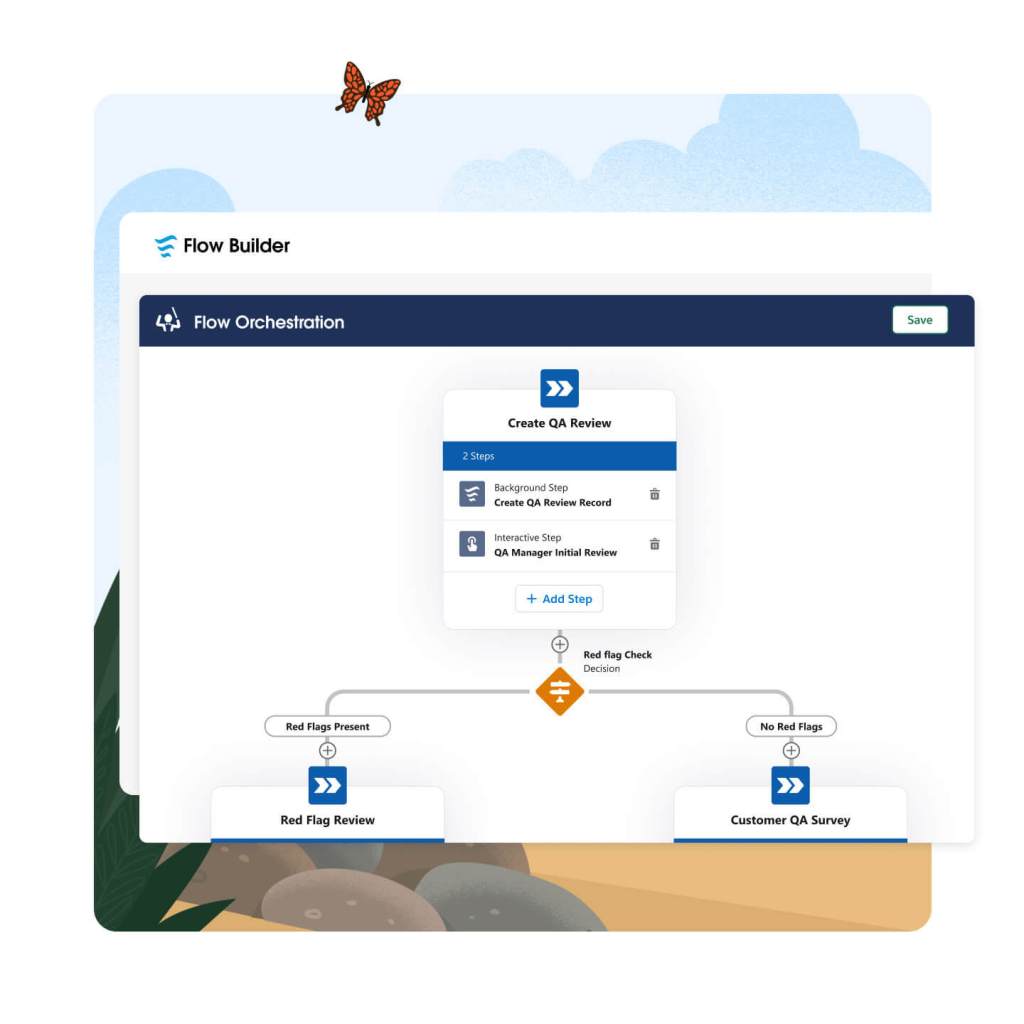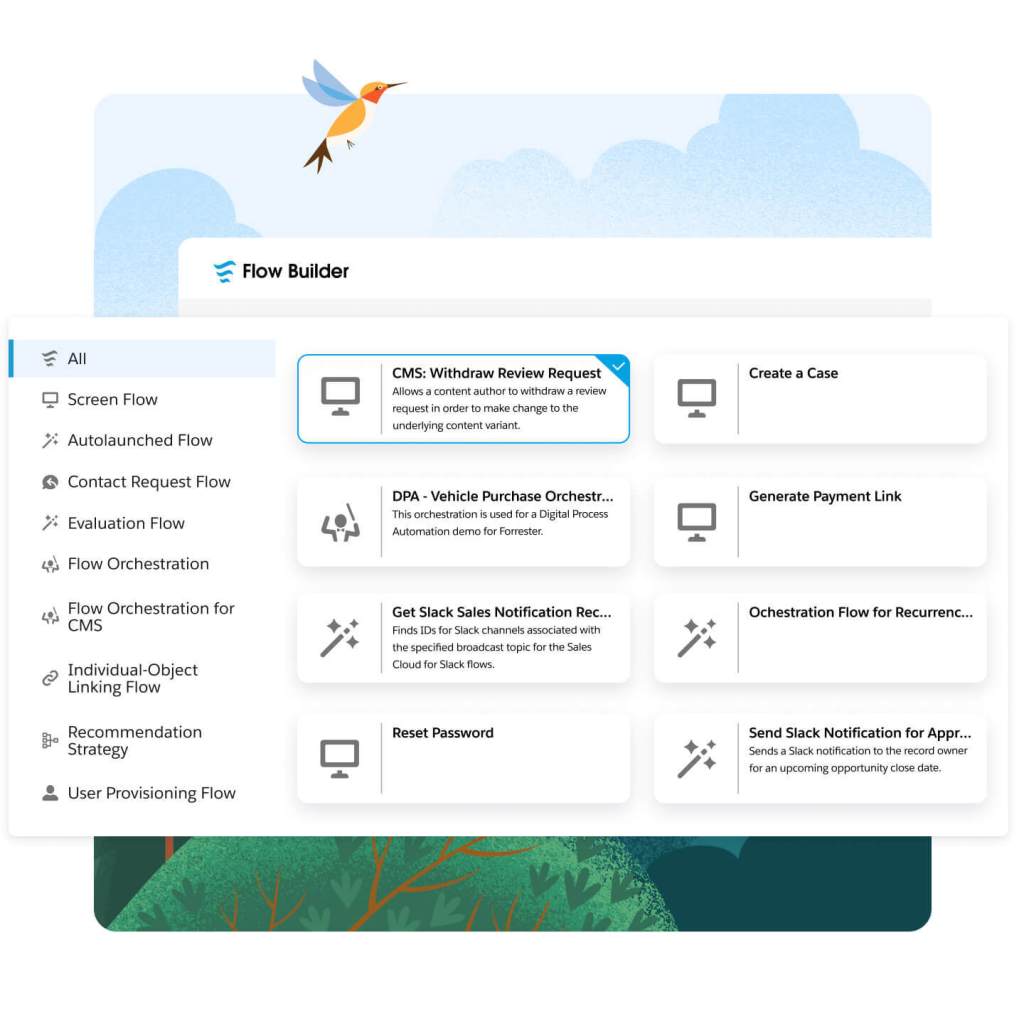
Watch the MuleSoft Keynote at Dreamforce: "Build a Foundation for Autonomous AI"
Watch now
Watch the MuleSoft Keynote at Dreamforce: "Build a Foundation for Autonomous AI"
Watch nowUse AI to build scalable processes that empower people to take action across various platforms – Salesforce, cloud, custom, or legacy systems – driving efficiency and cost savings. Implement unified, real-time workflows that maximize productivity and collaboration by reducing manual effort and fast-tracking handoffs and approvals.


Empower your entire organization to take part in innovation — all while reducing your IT team’s workload.
Business teams can build automated solutions faster with customizable out-of-the-box and reusable building blocks developed by IT and the larger ecosystem. These solutions can then extend across any app, document, image, green screen, legacy system, and everything in between.

As your company grows, so does the complexity of your workflows. Processes often require input from multiple users in multiple departments across multiple time zones and multiple systems. This increased complexity results in an increased amount of time spent waiting for each person to complete their task creating bottlenecks and reduced efficiency. Businesses want automation that helps them provide a seamless experience for their employees and customers across the entire business. Orchestration coordinates complex, multiuser processes using built-in task management to fast-track work between people and systems.

Businesses want easy-to-use automation tools that reduce the burden on IT while empowering everyone to collaborate and innovate quickly. They want automation that’s scalable for Salesforce and non-Salesforce users and makes it easy to integrate with existing and legacy systems. With the right tools, cross-functional teams can easily build automated processes that span every system. Additionally, they can enhance the user experience with dynamic, guided screen flows or gather data from any document, image, or legacy system to ensure data accuracy and consistency and boost productivity.

Not everyone is an expert when it comes to automation, and starting from scratch can feel daunting. Sometimes teams need to deliver projects quickly with little to no resources or expertise. With a library of over 900 customizable industry-specific, prebuilt templates to choose from, it’s easy to deliver automation quickly across your entire organization, regardless of a team’s experience.
Before, it would take easily 3-7 days to open up a new account. Now, the advisor can do it with basically one click. That’s what Salesforce enables."
Greg BeltzerHead of Technology, RBC Wealth Management
Explore how business technologists and IT leaders can leverage business automation to unlock the full potential of Customer 360.
See how to create better experiences for your customers and employees by automating actions across external and legacy systems.
Learn how simple triggered actions and intelligent workflows can streamline your business processes.
Try MuleSoft Anypoint Platform free for 30 days. No credit card, no installations.
Tell us a bit more so the right person can reach out faster.
Get the latest research, industry insights, and product news delivered straight to your inbox.
Automation reduces the work humans have to do on repetitive or monotonous tasks, which usually means a better experience for your customers and lower stress for your teams. It involves technology that takes a task people do and relegates it to software or hardware. Automation is a streamlined process that reduces or eliminates manual steps. There are two types of automation: unattended (actions without human intervention) and attended (actions executed by humans). Some automated tasks may combine the two.
Robotic process automation (RPA) is a software technology that combines robotics and automation to perform repetitive tasks. RPA is a method for business process automation that uses an application or "bot" that replicates an employee's desktop actions by interacting with an interface in the same way a human would.
Workflow automation, on the other hand, is defined as taking an often tedious, manual task and converting it to a largely automated one. In a work-from-anywhere world, workflow automation makes it easier and faster for employees to do work that’s enjoyable and high-impact rather than repetitive and monotonous.
Workflow automation streamlines and enhances how employees use the CRM so they can be more productive and better serve customers. This improves both the employee’s and the customer’s experience. Executives report that improved employee experience leads to improved customer experience and can also impact revenue.
Automated workflows also help remove bottlenecks, serving up insights to the right employee at the right time, in context of what they’re working on. For example, an intelligent workflow can integrate CRM and enterprise resource planning (ERP) systems to deliver consumer buying insights to sales teams.